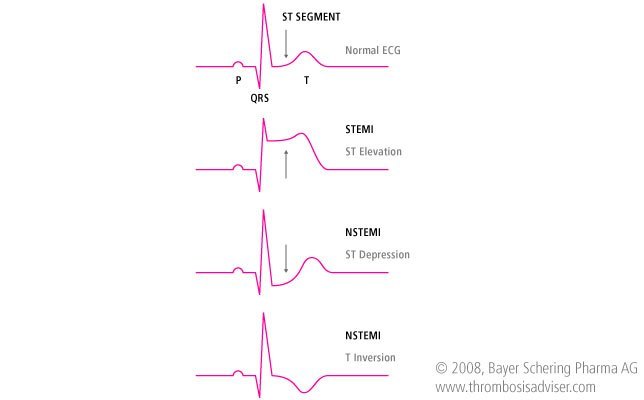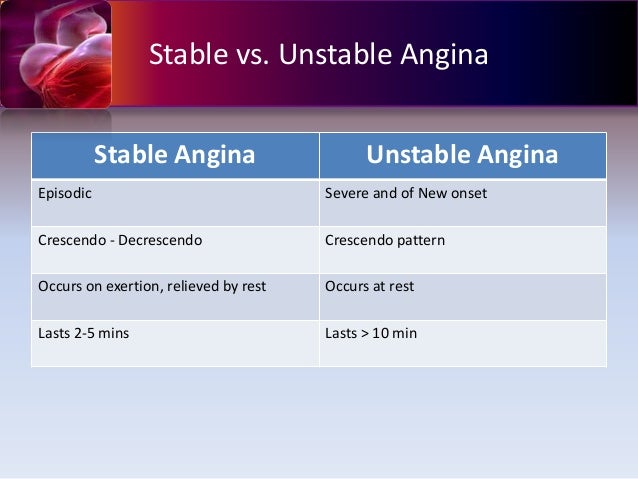Stable Vs Unstable Angina Ecg

Unstable angina or sometimes referred to as acute coronary syndrome causes unexpected chest pain and usually occurs while resting.
Stable vs unstable angina ecg. Angina is a type of chest pain. Approximately 50 of patients with unstable angina progress to myocardial infarction within 30 days if left untreated. Stable angina occurs because the blood going to the heart muscle is not enough to cover for the extra workload in exercise. The most common cause is reduced blood flow to the heart muscle because the coronary arteries are narrowed by fatty buildups atherosclerosis which can rupture causing injury to the coronary blood vessel resulting in blood clotting which blocks the flow of blood.
Here is the comparison chart to show you the difference between stable and unstable angina. They differ primarily in whether the ischemia is severe enough to cause sufficient damage to the heart s. Stable vs unstable angina stable angina occurs with exertion while unstable angina comes on while the patient is at rest. The difference between stable angina pectoris unstable angina pectoris a non st segment elevation myocardial infarction or non stemi and a st segment elevation myocardial infarction or stemi.
The ecg frequently shows changes st segment depression and ischemic t wave but without changes in qrs. However unstable angina is considered an acute coronary syndrome because it is an imminent precursor to myocardial infarction. It is also classified as a type of acute coronary syndrome acs. It can be difficult to distinguish unstable angina from non st elevation non q wave myocardial infarction nstemi.
Summary of stable vs unstable angina. Unstable angina differs from stable angina in that the discomfort is usually more intense and easily provoked and st segment depression or elevation on ecg may occur.
















